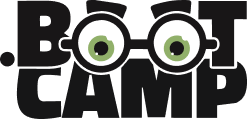In today’s rapidly evolving educational landscape, online courses have gained significant popularity. They offer flexibility, accessibility, and the opportunity to acquire new skills or knowledge from the comfort of one’s own home. However, for educators and institutions offering these courses, determining their success can be a complex task. That’s where Key Performance Indicators (KPIs) come into play. KPIs provide valuable insights into the effectiveness of online courses, allowing educators to make data-driven decisions for improvement. In this article, we’ll explore the importance of KPIs for online courses and identify key metrics that can help measure their success.
The Significance of Measuring Success
Why Measure Success in Online Courses?
Before delving into specific KPIs, it’s essential to understand why measuring success in online courses is crucial. The traditional classroom setting allows for immediate feedback and interaction, making it easier to gauge student progress. In contrast, online courses often lack these face-to-face elements, making it essential to rely on data for assessment.
Enhancing Student Outcomes
Measuring success enables educators to identify areas where students are excelling and where they may be struggling. This information can be used to adapt course materials, assignments, and teaching methods to improve overall student outcomes.
Assessing Course Effectiveness
By tracking KPIs, course instructors can assess the effectiveness of their teaching strategies and course content. This information can help refine and optimize course design for better engagement and learning outcomes.
Making Informed Decisions
Data-driven decision-making is at the heart of education’s evolution. KPIs provide the insights needed to make informed choices about curriculum adjustments, resource allocation, and instructional improvements.
Key Performance Indicators (KPIs) for Online Courses
1. Enrollment Rate
The enrollment rate is the percentage of visitors to a course page who ultimately sign up for the course. It’s an initial indicator of the course’s appeal and whether the course description and marketing efforts are effective.
2. Completion Rate
Completion rate measures the percentage of students who finish the entire course. A high completion rate indicates that the course content is engaging and that students are motivated to complete it.
3. Engagement Metrics
Engagement metrics encompass various aspects, including discussion forum activity, video views, and quiz participation. These metrics reveal how actively students are participating in the course material and interacting with their peers.
4. Retention Rate
Retention rate tracks the percentage of enrolled students who continue the course beyond a certain point, such as the first week or first module. High retention rates suggest that students find the course valuable and are likely to complete it.
5. Assessment Scores
Regular assessments, quizzes, and assignments provide valuable data on student performance. Monitoring assessment scores allows instructors to identify areas where students may be struggling and make necessary adjustments.
6. Student Feedback and Surveys
Collecting feedback from students through surveys can provide insights into their overall satisfaction with the course. It also offers suggestions for improvement.
7. Course Drop-Out Rate
This metric highlights the number of students who start the course but drop out before completion. A high drop-out rate can signal issues with course content, structure, or engagement.
8. Time Spent on Course
Analyzing the average time students spend on the course materials helps determine their level of engagement. Longer average times suggest students are deeply engaging with the content.
9. Peer Interaction
Encouraging peer interaction and collaboration is a vital component of many online courses. Monitoring how students engage with their peers can reveal valuable insights into the course’s social aspect.
Setting Benchmarks and Goals
Once you’ve identified the relevant KPIs for your online course, the next step is to set benchmarks and goals. These benchmarks serve as reference points and help you gauge whether your course is performing well or needs improvement. For instance, if your completion rate is currently 40%, you might set a goal to increase it to 60% within a specific time frame.
Continuous Improvement
Measuring success in online courses is not a one-time task. It’s an ongoing process that requires continuous monitoring and adjustment. As you collect data and analyze KPIs, you’ll gain insights into areas that need improvement. These insights can guide you in making necessary changes to enhance the overall learning experience.
In the world of online education, measuring success through KPIs is indispensable. These metrics provide a window into the effectiveness of your courses, helping you adapt, evolve, and ultimately provide a better educational experience for your students. By carefully monitoring enrollment rates, completion rates, engagement metrics, and more, you can ensure that your online courses not only attract learners but also empower them to succeed.
Whether you’re an individual instructor or part of an educational institution, harnessing the power of KPIs will help you shape the future of online education, one successful course at a time.
